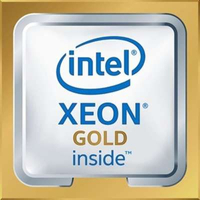This little-known Intel CPU deal can save you a massive 60%
If you want to buy a Xeon processor for your server that is
Xeon processors are not exactly cheap; the crème de la crème of Intel CPUs often carry eye-watering price tags. However, from time to time, there’s a bargain to be had.
Take, for example, the Intel Gold 6258R, which our sister publication AnandTech has identified as being almost a carbon copy of the Platinum 8280.
The only differences are the price (just under $4,000 for the former and just over $10,000 for the Platinum edition) and the maximum number of sockets supported (8 vs. 2).
Intel Xeon Gold 6258R processor, only $4,005.51
At less than $150 per core, this 28-core, 56-thread Xeon processor is a hidden gem in the sprawling Intel pricelist. It is a Platinum 8280 in disguise with the only major difference being the number of socket supported. It is optimized for demanding mainstream data center, multi-cloud compute, and network and storage workloads.
- Here's our list of the best dedicated server hosting out there
- Check out our list of the best bare-metal hosting available
- We've built a list of the best colocation providers around
Otherwise, the number of cores, the cache, the maximum DDR4 capacity, the TDP and the base/turbo frequencies are all exactly the same.
“If anyone is thinking of deploying Intel’s high-end Xeon Platinum 8280s in anything less than a eight-socket system, don’t bother," wrote Dr. Ian Cutress, author of the AnandTech article.
"Save a few grand per CPU and gain the plaudits of your boss – unless they start asking questions about why the infrastructure doesn’t have the latest ‘Xeon Plutonium' things they’ve heard about.”
Who would want to use an 8-socket system? Well, probably not VPN providers or cloud storage companies, whose end users do not need that kind of firepower. Hyperscalers and data centre operators, on the other hand, will certainly find a use for the Intel Gold 6258R.
Are you a pro? Subscribe to our newsletter
Sign up to the TechRadar Pro newsletter to get all the top news, opinion, features and guidance your business needs to succeed!
Next, AnandTech will look at how the Gold 6258R compares with the EPYC 7542, which has more cores and costs much less, so keep your eyes peeled for that.
- Here's our choice of the best VPS hosting services on the market

Désiré has been musing and writing about technology during a career spanning four decades. He dabbled in website builders and web hosting when DHTML and frames were in vogue and started narrating about the impact of technology on society just before the start of the Y2K hysteria at the turn of the last millennium.
